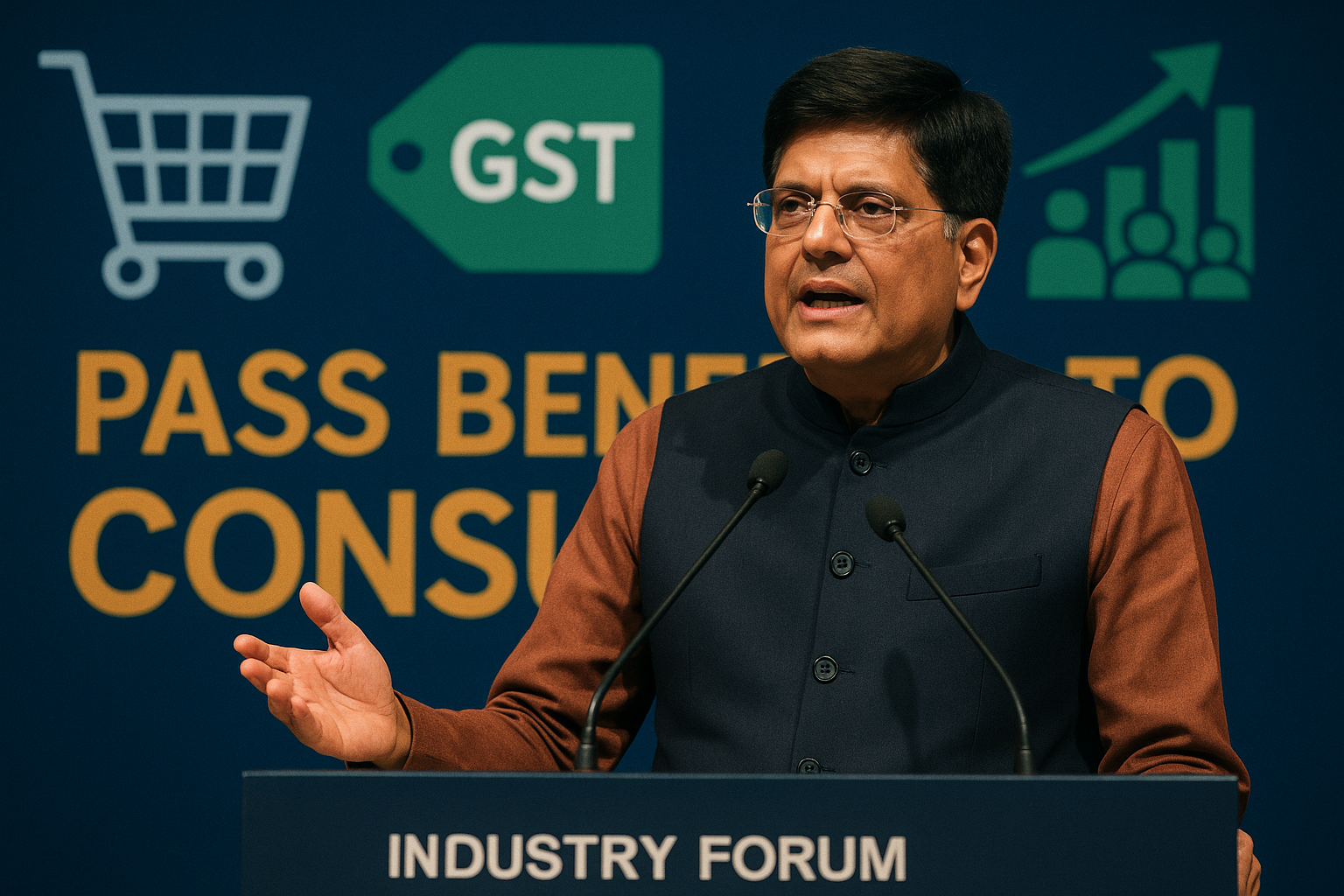Commerce and Industry Minister Piyush Goyal has called on Indian businesses to ensure that the benefits of GST rate cuts are fully passed on to consumers. Emphasizing that reforms under GST 2.0 aim to boost demand, job creation, and economic growth, Goyal warned that withholding these benefits could undermine the reform’s objectives.
His remarks highlight the government’s focus on consumer-centric tax reforms and accountability from industry stakeholders in driving India’s growth momentum.
Core Development
Addressing industry leaders, Goyal stressed that the GST Council’s decision to rationalize tax rates on essentials, textiles, food items, and insurance was made to increase affordability and stimulate consumption. For this to succeed, businesses must reflect these tax reductions in final retail prices.
He added that ensuring transparency in passing on benefits will not only support demand revival but also create a ripple effect in employment generation and industrial expansion.
Key Drivers Behind the Call
Consumer Welfare: Ensuring households directly benefit from reduced GST rates.
Demand Stimulus: Lower retail prices encourage higher spending, especially during the festive season.
Economic Multiplier Effect: Stronger demand boosts jobs, MSME growth, and supply chains.
Stakeholder Impact
Consumers: Relief in household budgets through lower prices on daily-use goods and services.
Businesses: Opportunity to increase sales volumes, though margins may need recalibration.
Government: Successful reform implementation reinforces credibility and fiscal balance.
Industry & Policy Reactions
Industry bodies welcomed the minister’s remarks but emphasized the need for clarity on compliance mechanisms to ensure smooth execution. Analysts noted that if businesses actively pass on benefits, GST 2.0 could unlock a new wave of consumer confidence and economic growth.
Challenges Ahead
Compliance Monitoring: Ensuring uniform pass-through across industries and regions.
Pricing Adjustments: Some firms may face short-term pressure on profitability.
Consumer Awareness: Educating buyers to demand transparency in billing.
Strategic Outlook
The success of GST 2.0 will depend not just on policy design but also on industry discipline. If businesses align with the government’s vision, India could see a consumption-led growth surge in the coming quarters.
Why This Matters
Passing on GST rate cuts is more than compliance — it is a confidence-building measure for consumers and a catalyst for demand, jobs, and long-term growth. Goyal’s appeal underscores the shared responsibility of government and industry in making GST 2.0 a success.












